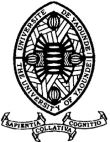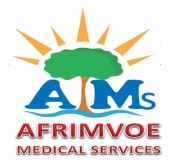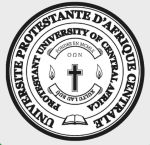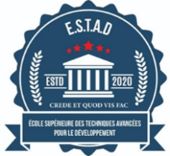Challenges in the Identification of the Bacteriological Aetiology of Arthromyositis in a Major SSFA2 Sickle Cell Disease Patient in Bouake
Difficultés dans l’Orientation Étiologique d’une Arthromyosite chez un Drépanocytaire Majeur SSFA2 à Bouake
DOI:
https://doi.org/10.5281/hra.v3i3.6526Keywords:
Sickle cell disease; bacterial arthromyositis, etiologyAbstract
RÉSUMÉ
La drépanocytose est l’hémoglobinopathie la plus répandue. Elle est émaillée de complications graves qui peuvent être anémiques, infectieuses ou ischémiques de sièges divers. L’atteinte osseuse est fréquente, à type d’infarctus, ostéomyélite voir arthromyosite. Nous rapportons un où nous avons rencontré des difficultés pour arriver au diagnostic étiologique d’une arthromyosite chez un drépanocytaire majeur SSFA2.
ABSTRACT
Sickle cell disease is the most widespread hemoglobinopathy. It is fraught with serious complications, which may be anemic, infectious or ischemic. Bone involvement is frequent, with infarction, osteomyelitis and even arthromyositis. We report the case in whom we faced challenges in establishing the the bacteriological etiology of arthromyositis in a major SSFA2 sickle cell disease patient in Bouake.
References
1. Eon S, Glard Y, Guedj E, Fournier PE, Bourliere- Najean B, Aschero A et al. RP-WP-34 Les infections osteo-articulaires de l´'enfant kit d'auto-apprentissage. J Radiol. 2009 Oct ;90(10) : 1599. Google Scholar
2. Wong, A. L., et al. (2001). "Differentiating osteomyelitis from bone infarction in sickle cell disease." Pediatr Emerg Care 17(1) : 60-63 ; quiz 64.
3. Le Saux N. Le diagnostic et la prise en charge des infections ostéoarticulaires aiguës chez les enfants. Paediatr Child Health. 2018 Aug; 23(5): 344-352. PubMed| Google Scholar
4. Vanderhave KL, Perkins CA, Scannell B, Brighton BK. Orthopaedic Manifestations of Sickle Cell Disease. J Am Acad Orthop Surg. 2018
5. Ibrahima koolo barry. Les Complications Infectieuses de la Drépanocytose Majeure au Service de Pédiatrie de l'Hôpital National Donka à Conakry (Guinée) : à Propos de 34 Cas. Health science and diseases. Vol 20 n°4 (2019)
6. Kaklamanis, P. (1984). "Osteoarticular manifestations in sickle-cell disorders." Clin Rheumatol 3(4) : 419-434.
7. Delgado, J., et al. (2015). "Utility of unenhanced fatsuppressed T1-weighted MRI in children with sickle cell disease - can it differentiate bone infarcts from acute osteomyelitis ? Pediatr Radiol 45(13) : 1981-1987.
8. Manix Ilunga Banza et al. Les infections ostéo-articulaires chez les drépanocytaires à Lubumbashi : étude épidémiologique, étiologie et prise en charge. Pan African Medical Journal. 2021 ;38(77). 10.11604/pamj.2021.38.77.21484
9. Ram S, Lewis LA, Rice PA. Infections of people with complement deficiencies and patients who have undergone splenectomy. Clin Microbiol Rev. 2010 Oct ;23(4) : 740-80. PubMed| Google Scholar
10. Le Saux N. Le diagnostic et la prise en charge des infections ostéoarticulaires aiguës chez les enfants. Paediatr Child Health. 2018 Aug; 23(5): 344-352. PubMed| Google Scholar
Downloads
Published
How to Cite
Issue
Section
License
Copyright (c) 2025 Botti Renee Paule, N’dri Aya Annick Charlene, Koffi Konan Jacques Fabrice, Ayemou Romeo, Traoré Aissata, Mahi Gnemagnon, Ouattara Awa, Grahouri Joel Kouadio Betsaleel, Sodji Roxane Loraine, Ouattara Bourhaima

This work is licensed under a Creative Commons Attribution-NonCommercial-NoDerivatives 4.0 International License.
Authors who publish with this journal agree to the following terms:
- Authors retain copyright and grant the journal right of first publication with the work simultaneously licensed under a Creative Commons Attribution License CC BY-NC-ND 4.0 that allows others to share the work with an acknowledgement of the work's authorship and initial publication in this journal.
- Authors are able to enter into separate, additional contractual arrangements for the non-exclusive distribution of the journal's published version of the work (e.g., post it to an institutional repository or publish it in a book), with an acknowledgement of its initial publication in this journal.
- Authors are permitted and encouraged to post their work online (e.g., in institutional repositories or on their website) prior to and during the submission process, as it can lead to productive exchanges, as well as earlier and greater citation of published work










